In preparation of our CCNA exam, we want to make sure we cover the various concepts that we could see on our Cisco CCNA exam. So to assist you, below we will discuss Console & AUX Cabling.
Introduction
This document summarizes the cabling requirements for console and auxiliary (AUX) ports. Cisco routers either have RJ-45-based or DB-25 DCE/DTE console and AUX ports. You can connect either a terminal (DTE) or a modem (DCE) to these ports. In either instance, you will need both an RJ-45 cable and an RJ-45-to-DB-25 or RJ-45-to-DB-9 connector.
Components Used
This document is not restricted to specific software and hardware versions.
The information presented in this document was created from devices in a specific lab environment. All of the devices used in this document started with a cleared (default) configuration. If you are working in a live network, ensure that you understand the potential impact of any command before using it.
Console Port Settings for Terminal Connection
Before you connect a terminal to the console port, configure the terminal to match the router console port as follows:
- 9600 baud
- 8 data bits
- no parity
- 2 stop bits (9600 8N2) OR 1 stop bit¹
¹Dependant on the router.
Types of Console and AUX Connectors
As described in the following table, Cisco routers have three types of console and AUX connectors:
- RJ-45
- DB-25 DCE
- DB-25 DTE
There are three styles of RJ-45-to-DB-25 connectors: DCE style (modem), DTE style, and DCE style (non modem). Each one has a different role. Generally, DTE is for terminals, DCE (modem) is for modems, and DCE (non-modem) is obsolete.
Note: You can change a DCE style (non modem) to a DCE style (modem) by moving pin 6 to pin 8.
Console and AUX Connectors for Cisco Routers
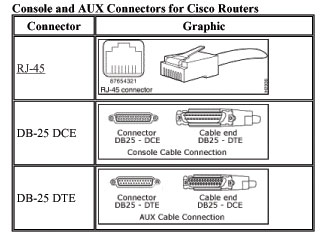
Cabling for console and AUX port:
- RJ-45 Cables
- RS 232 Straight-through Cable
Types of RJ-45 Cabling
Cisco products use the following types of RJ-45 cables:
- Straight-through
- Crossover
- Rolled
- RJ-45 to DB9 female
Cisco does not provide these cables; they are widely available from other sources. Console cable is usually provided with the Console Cable Kit.
Note: The console port does not support modem control or hardware flow control.
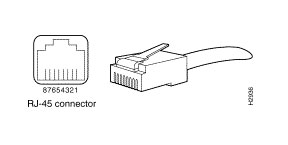
How to Identify an RJ-45 Cable
To identify the RJ-45 cable type, hold the two ends of the cable next to one another so you can see the colored wires inside the ends, as shown in the following figure.
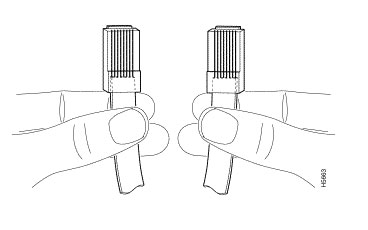
There are three types of commonly used RJ-45 cabling: straight, cross and rolled. If you hold the two ends of an RJ-45 cable side by side, you'll see eight colored strips, or pins, at each end. If the order of the colored pins is the same at each end, then the cable is straight. If the order of the colors is reversed at each end, then the cable is rolled.
Examine the sequence of colored wires to determine the type of RJ-45 cable, as follows:
Straight-through Cabling
In a straight-through cable, the colored wires are in the same sequence at both ends of the cable.
Straight-through Cable
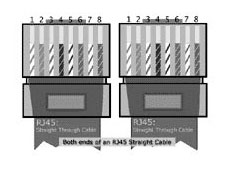
RJ-45 Straight-through (Ethernet) Cable Pin-outs
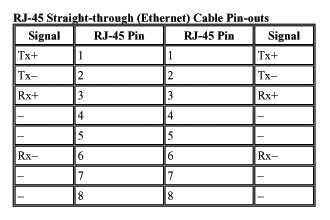
Crossover Cable
In a crossover cable, the first (far left) colored wire at one end of the cable is the third colored wire at the other end of the cable.
Crossover Cable
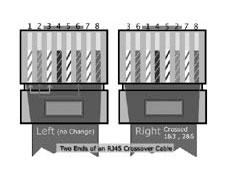
RJ-45 Crossover (Ethernet) Cable Pin-outs
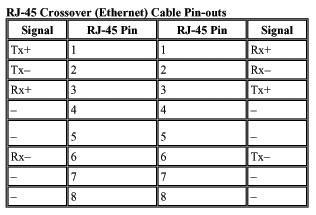
Rolled Cable
In a rolled cable, the colored wires at one end of the cable are in the reverse sequence of the colored wires at the other end of the cable.
Rolled Cable
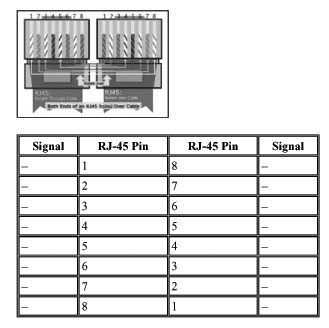
Note: CAB-OCTAL-ASYNC, the 8-port RJ-45 adapter that is used with the Cisco 2509, 2510, 2511, and 2512, is the same as a rolled cable.
RJ-45 to DB-9 Female*
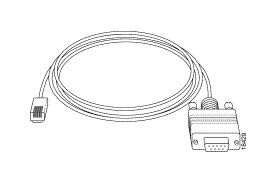
This cable is also known as Management Cable.
*Cisco is providing this cable with its 600, 800, 1600 and 1700 Series Routers.
Type of Cable for DB-25 Connectors
RS 232 Straight-through Cable
The following illustration shows serial cable CAB-R23= (part number 74-0173), which is a general serial cable for all router platforms. This cable has a female DB-25 connector on one end and a male DB-25 connector on the other end. Either end of the CAB-R23 cable can be the Cisco end or the network end, depending on whether the Cisco router is designated as a DCE device or a DTE device. If the router is designated as a DCE device, the female DB-25 connector is the Cisco end. If the router is designated as a DTE device, the male DB-25 connector is the Cisco end.
Both Ends of RS 232 Straight-through Cable for DB-25 Connectors

Pin-outs for RS 232 Straight Through Cable (DB-25)
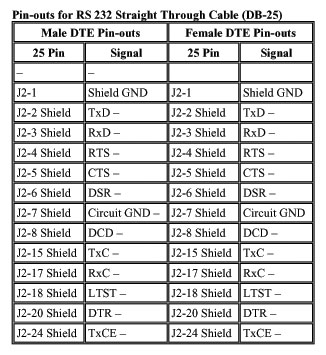
Adapters
There are two types of adapters needed to connect a PC to a router.
- RJ-45-to-DB-9 Adapter
- RJ-45-to-DB-25 Adapter
RJ-45-to-DB-9 Adapter
This adapter connects a router to a PC though a COM port.
RJ-45-to-DB-9 Adapter
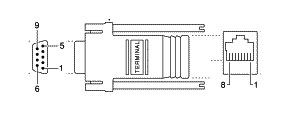
RJ-45-to-DB-25 Adapter
This adapter connects a router to PC through a serial port.
RJ-45-to-DB-25 Adapter
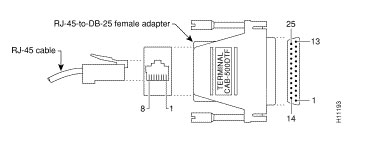
Cabling and Adapter Setups that Work
Below are the most common ways to console into a router.
Console Connection Combination
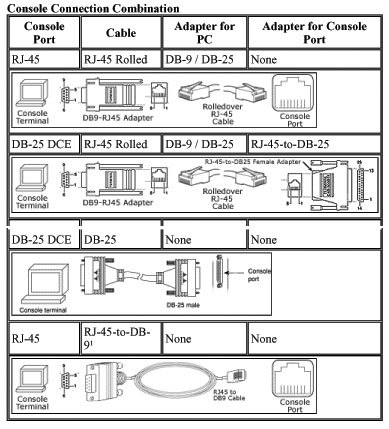
¹ Cisco is providing this cable with its Cisco 600, 800, 1600 and 1700 Series Routers.
You cannot mix and match these components randomly. Only the following combinations work:
Console Connection Combination
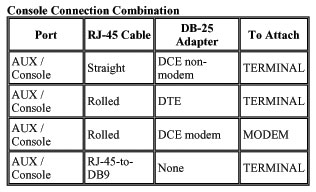
These are the only setups that work. If you don't have the components you need, use the RJ-45 Component Guide chart to order them.
RJ-45 Port and Adapter Pin-outs
The following chart shows the pin-outs for RJ-45 console and AUX ports. The console port does not use RTS/CTS.
RJ-45 Port Pin-outs
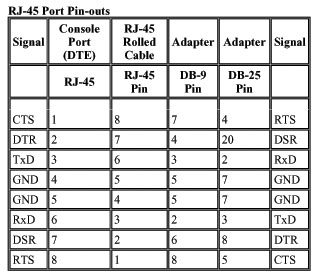
DB-25 Console and AUX Port Pin-outs
Console Port Signals
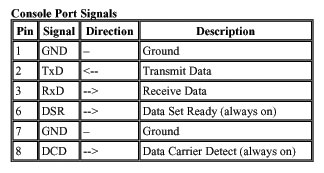
Note: The console port does not support modem control or hardware flow control.
Auxiliary Port Signals
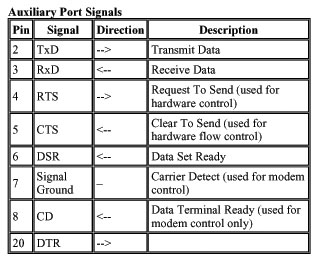
Note: The auxiliary port supports hardware flow control and modem control.
Console Cable Kit
A console cable kit is provided with your router. Use this kit when connecting your router to a PC or a terminal.
The console cable kit contains these items:
- RJ-45-to-RJ-45 console cable (blue)
- RJ-45-to-DB-25 adapter (gray)
- RJ-45-to-DB-9 adapter (gray)
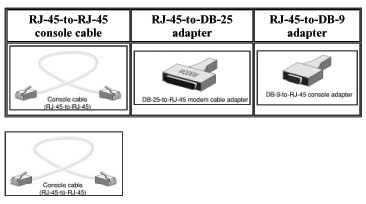
Cisco's RJ-45 Component Guide
The following chart summarizes Cisco's RJ-45 components. The first seven entries are DB-25 connectors, and the last two are RJ-45 cables. Connectors are described in terms of their sex and their role. For example, an FDTE is a female DTE style connector, an MMOD is a male modem style connector, and so on. Remember, you need shielded cables in order to run at 115.2 kbps.
RJ-45 Component Guide
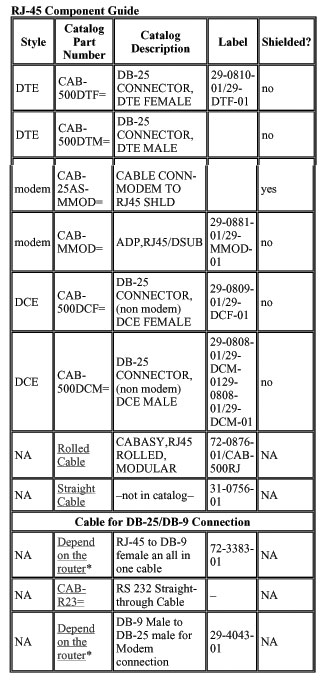
I hope you found this article to be of use and it helps you prepare for your Cisco CCNA certification. I am sure you will quickly find out that hands-on real world experience is the best way to cement the CCNA concepts in your head to help you pass your CCNA exam!
